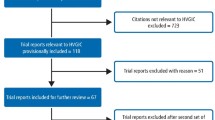Abstract
Data sources
Sources of data were the Cochrane Oral Health Group's Trials Register, Cochrane CENTRAL (Cochrane Library), Medline and Embase. Reference lists of relevant articles were also searched and the investigators of the included studies were contacted for details of additional published and unpublished trials.
Study selection
Randomised controlled trials (RCT) were chosen that compared adhesively bonded versus traditional nonbonded amalgam restorations in conventional preparations utilising deliberate retention, in adults with permanent molar and premolar teeth suitable for Class I and II amalgam restorations only.
Data extraction and synthesis
Two review authors independently screened papers, extracted trial details and assessed the risk of bias in the included study.
Results
One trial was included, comprising 31 patients who received 113 restorations. At 2 years, only three out of 53 restorations in the nonbonded group were lost, which was attributed to a lack of retention, and 55 out of 60 bonded restorations survived, with five unaccounted for at followup. Postinsertion sensitivity was not significantly different (P >0.05) at baseline or 2-year followup. No fractures of tooth tissue were reported and there was no significant difference between the groups or matched pairs of restorations in their marginal adaptation (P >0.05).
Conclusions
There is no evidence to either claim or refute a difference in survival between bonded and nonbonded amalgam restorations. This review only found one methodologically sound but somewhat under-reported trial. This trial did not find any significant difference in the in-service performance of moderately sized adhesively bonded amalgam restorations, in terms of their survival rate and marginal integrity, in comparison with nonbonded amalgam restorations over a 2-year period. In view of the lack of evidence on the additional benefit of adhesively bonding amalgam compared with with nonbonded amalgam, it is important that clinicians are mindful of the additional costs that may be incurred.
Similar content being viewed by others
Commentary
Despite the well-documented clinical success of amalgam restoration, which promoted this material to the treatment of choice for many years, it is still far from ideal. Its inability to provide a sufficient seal against micro-leakage, the lack of adhesion to tooth structure, the need to remove sound tooth structure to achieve mechanical retention and the high incidence of tooth fracture and discoloration, encouraged some research groups to recommend the bonded amalgam restoration as an alternative. The data in this well-designed systematic review were obtained from longitudinal studies intended to investigate the null hypothesis of there being no difference in survival between traditional nonbonded and contemporary adhesively bonded amalgam restorations. The data collected from this study support the null hypothesis.
Although this systematic review has accounted for selection, performance, detection and attrition bias for all the identified studies, grave weakness is still there. As with many systematic reviews, the limited number of well-conducted RCT might reduce the effectiveness of this review in its ability to provide valuable scientific evidence to support or contribute to changes in our conventional clinical practice. Although efforts were made to avoid language bias and to examine the reference lists, no attempt was made to hand-search any journals and the only attempt to identify unpublished trials was made by contacting investigators of the included study.
The major weaknesses of this systematic review is that the result is derived from the inclusion of one sole industry sponsored trial, which failed to provide sufficient information about the randomisation procedure. This trial could therefore be considered to fall into the category of poor reporting. The assumption of inadequate randomisation method or bias interference generally indicates inadequate methods.1 Several of the weaknesses of the included RCT were identified by the review authors and the trial did not affect the final outcome of this paper but its inclusion, which was conducted by one of the review authors and which does not strictly meet the stipulated inclusion criteria, opens this well-designed systematic review to criticism about the quality of assessment and the possibility of excluding relevant studies.
Practice points
-
There is no current scientific evidence to justify the extra cost and effort associated with the use of adhesively bonded amalgam restorations in comparison with nonbonded amalgam restorations.
References
Juni P, Altman DG, Egger M . Systematic reviews in health care: assessing the quality of controlled clinical trials. Br Med J 2001; 323: 42–46.
Author information
Authors and Affiliations
Additional information
Address for correspondence: Luisa Fernandez Mauleffinch, Cochrane Oral Health Group, MANDEC, School of Dentistry, University of Manchester, Higher Cambridge Street, Manchester M15 6FH, UK. E-mail: luisa.fernandez@manchester.ac.uk
This paper is based on a Cochrane Review published in The Cochrane Library 2009, Issue 1 (see www.thecochranelibrary.com for information). Cochrane Reviews are regularly updated as new evidence emerges and in response to feedback, and The Cochrane Library should be consulted for the most recent version of the review.
Fedorowicz Z, Nasser M, Wilson N. Adhesively bonded versus non-bonded amalgam restorations for dental caries. Cochrane Database Syst Rev 2009; issue 4
Rights and permissions
About this article
Cite this article
Murad, M. No available evidence to assess the effectiveness of bonded amalgams. Evid Based Dent 10, 106 (2009). https://doi.org/10.1038/sj.ebd.6400682
Published:
Issue Date:
DOI: https://doi.org/10.1038/sj.ebd.6400682



